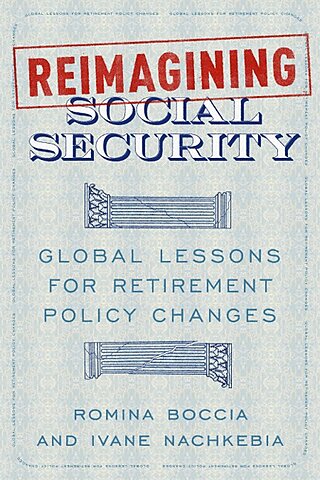Romina Boccia and Ivane Nachkebia
I don’t know. It feels like we’re paying into this system that was designed for a completely different world. I mean, it was set up 90 years ago, and the way things are going now, it just doesn’t add up anymore. People are living longer, fewer workers are supporting more retirees, and the debt is skyrocketing.
That’s Amanda—a fictional 35-year-old nurse, wife, and mother—speaking in the opening pages of Reimagining Social Security: Global Lessons for Retirement Policy Changes, released today by the Cato Institute. Her story reflects the growing anxiety among younger workers, who are paying into a system increasingly out of step with today’s demographic and economic realities.
The book’s release comes just two days before Social Security’s 90th anniversary. As Social Security’s debt burden continues to grow, the cost of maintaining the program threatens to limit opportunities for Amanda’s generation and the ones to follow. Higher taxes, reduced benefits, and an uncertain economic future loom large if no reforms are made.
Readers of the book will discover overlooked facts and surprising comparisons that underscore the urgency of reform and the need to reimagine the program for the 21st century.
For instance:
- While much of the focus is on Social Security’s insolvency date of 2033, the program has been running cash-flow deficits since 2010. To cover these shortfalls, the government borrowed more than $1 trillion from 2010 to 2023. Between 2024 and 2033, Social Security is projected to add more than $4 trillion to federal deficits (including interest costs).
Over the next 75 years, the program has an unfunded obligation of $25 trillion, comparable to the size of the entire publicly held debt of $28 trillion in 2024. Our recent visual feature brings all of this to life.
- Seniors who receive Social Security benefits are significantly wealthier than the workers who fund those benefits—Americans aged 65–74 have three times the median net worth of those aged 35–44: $410,000 vs. $136,000.
- Compared to other nations examined in the book, Social Security provides substantially larger benefits. For example, Social Security’s maximum benefit at the full retirement age ($48,216) is more than three times higher than Canada’s ($14,568), more than twice as high as New Zealand’s ($21,475), and more than three times the US poverty threshold for a single senior in 2024 ($15,045). For those retiring at age 70, the maximum benefit rises to $61,296—more than four times the poverty threshold.
- According to the Internal Revenue Service, the largest share of Social Security payments in 2022—about 34 percent—went to individuals with an adjusted gross income of more than $100,000 (see figure below).
For workers like Amanda, these realities fuel a growing sense of disillusionment. But it doesn’t have to be this way.
Our book offers real solutions. It draws lessons from four countries that have reformed and modernized their pension systems: Canada, Germany, New Zealand, and Sweden. While no system is perfect, their reforms hold important takeaways for the United States:
- Flat benefits can better target poverty at a lower cost.
- Aligning retirement ages with life expectancy improves program sustainability and protects younger generations from rising tax burdens.
- Automatic stabilizers correct for changing demographics and keep pension systems solvent without political delays.
- Universal savings accounts (USAs) would empower workers to save for retirement and other priorities with greater flexibility.
Reimagining Social Security presents bold, evidence-based ideas to protect younger workers like Amanda from rising tax burdens and mounting debt while supporting the most vulnerable seniors.
Save the date for two of our upcoming events:
- Exclusive subscriber chat – Happening in early September, this online discussion will dive into the book’s key insights with the authors. It is open to Debt Dispatch paid subscribers, congressional staff, federal agency personnel, and active Cato donors. Register here.
- Book launch event – Join us on October 30 at the Cato Institute headquarters in Washington, DC, for a special launch event featuring leading experts in fiscal and retirement policy. You’ll also be able to watch the event live online. More details are coming soon.

